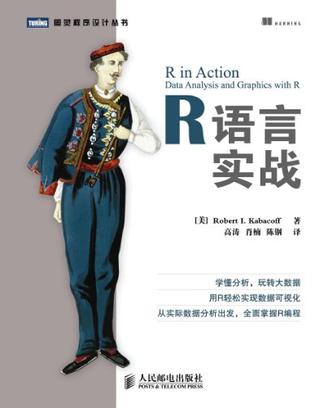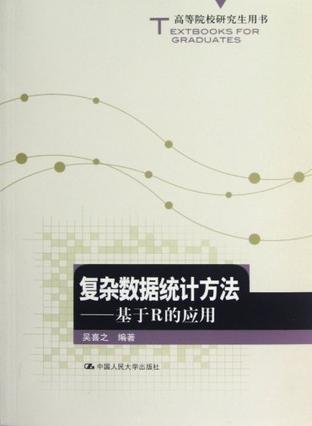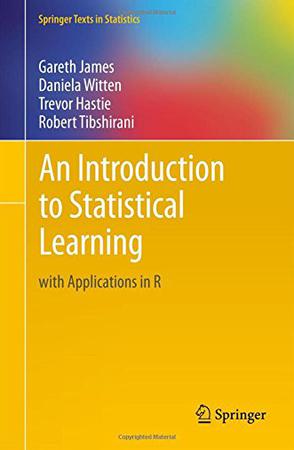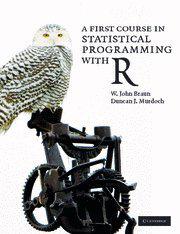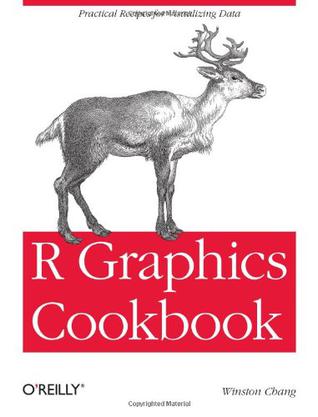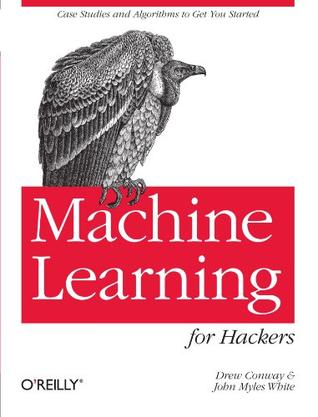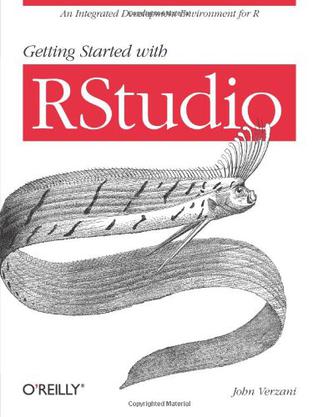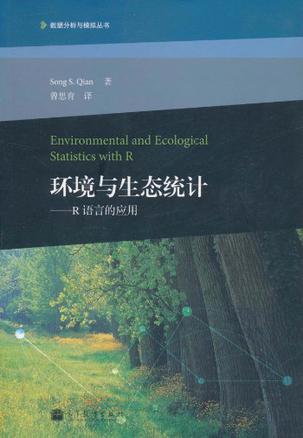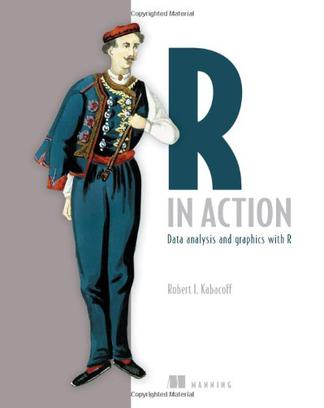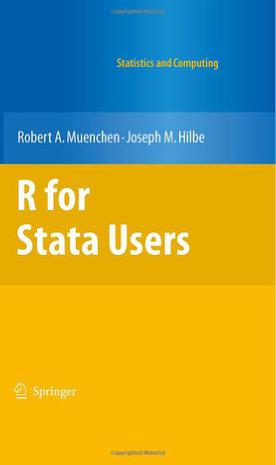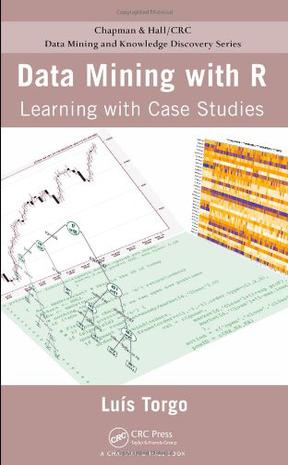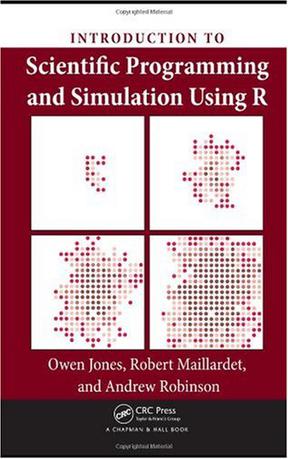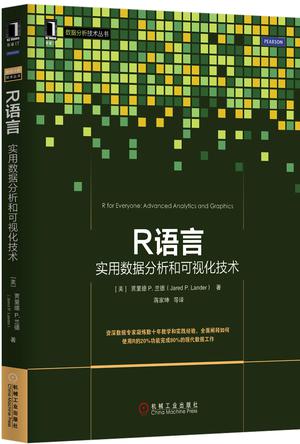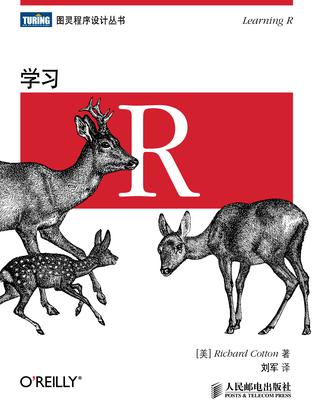欢迎来到相识电子书!
标签:R
-
R语言实战
数据时代已经到来,但数据分析、数据挖掘人才却十分短缺。由于“大数据”对每个领域的决定性影响, 相对于经验和直觉,在商业、经济及其他领域中基于数据和分析去发现问题并作出科学、客观的决策越来越重要。开源软件R是世界上最流行的数据分析、统计计算及制图语言,几乎能够完成任何数据处理任务,可安装并运行于所有主流平台,为我们提供了成千上万的专业模块和实用工具,是从大数据中获取有用信息的绝佳工具。 本书从解决实际问题入手,尽量跳脱统计学的理论阐述来讨论R语言及其应用,讲解清晰透澈,极具实用性。作者不仅高度概括了R语言的强大功能、展示了各种实用的统计示例,而且对于难以用传统方法分析的凌乱、不完整和非正态的数据也给出了完备的处理方法。通读本书,你将全面掌握使用R语言进行数据分析、数据挖掘的技巧,并领略大量探索和展示数据的图形功能,从而更加高效地进行分析与沟通。想要成为倍受高科技企业追捧的、炙手可热的数据分析师吗?想要科学分析数据并正确决策吗?不妨从本书开始,挑战大数据,用R开始炫酷的数据统计与分析吧! 本书内容: R安装与操作 数据导入/导出及格式化双变量关系的描述性分析回归分析 模型适用性的评价方法以及结果的可视化 用图形实现变量关系的可视化 在给定置信度的前提下确定样本量 高级统计分析方法和高级绘图 -
复杂数据统计方法
《复杂数据统计方法——基于r的应用》用自由的日软件分析30多个可以从国外网站下载的真实数据,包括横截面数据、纵向数据和时间序列数据,通过这些数据介绍了几乎所有经典方法及最新的机器学习方法。 《复杂数据统计方法——基于r的应用》特点:(1)以数据为导向;(2)介绍最新的方法(附有传统方法回顾);(3)提供r软件入门及全部例子计算的日代码及数据的网址;(4)各章独立。 《复杂数据统计方法——基于r的应用》的读者对象包括统计学、应用统计学、经济学、数学、应用数学、精算、环境、计量经济学、生物医学等专业的本科、硕士及博士生,各领域的教师和实际工作者。 -
An Introduction to Statistical Learning
An Introduction to Statistical Learning provides an accessible overview of the field of statistical learning, an essential toolset for making sense of the vast and complex data sets that have emerged in fields ranging from biology to finance to marketing to astrophysics in the past twenty years. This book presents some of the most important modeling and prediction techniques, along with relevant applications. Topics include linear regression, classification, resampling methods, shrinkage approaches, tree-based methods, support vector machines, clustering, and more. Color graphics and real-world examples are used to illustrate the methods presented. Since the goal of this textbook is to facilitate the use of these statistical learning techniques by practitioners in science, industry, and other fields, each chapter contains a tutorial on implementing the analyses and methods presented in R, an extremely popular open source statistical software platform. Two of the authors co-wrote The Elements of Statistical Learning (Hastie, Tibshirani and Friedman, 2nd edition 2009), a popular reference book for statistics and machine learning researchers. An Introduction to Statistical Learning covers many of the same topics, but at a level accessible to a much broader audience. This book is targeted at statisticians and non-statisticians alike who wish to use cutting-edge statistical learning techniques to analyze their data. The text assumes only a previous course in linear regression and no knowledge of matrix algebra. -
A First Course in Statistical Programming with R
This is the only introduction you'll need to start programming in R, the open-source language that is free to download, and lets you adapt the source code for your own requirements. Co-written by one of the R Core Development Team, and by an established R author, this book comes with real R code that complies with the standards of the language. Unlike other introductory books on the ground-breaking R system, this book emphasizes programming, including the principles that apply to most computing languages, and techniques used to develop more complex projects. Learning the language is made easier by the frequent exercises and end-of-chapter reviews that help you progress confidently through the book. Solutions, datasets and any errata will be available from the book's web site. The many examples, all from real applications, make it particularly useful for anyone working in practical data analysis. -
Lattice
R is rapidly growing in popularity as the environment of choice for data analysis and graphics both in academia and industry. Lattice brings the proven design of Trellis graphics (originally developed for S by William S. Cleveland and colleagues at Bell Labs) to R, considerably expanding its capabilities in the process. Lattice is a powerful and elegant high level data visualization system that is sufficient for most everyday graphics needs, yet flexible enough to be easily extended to handle demands of cutting edge research. Written by the author of the lattice system, this book describes it in considerable depth, beginning with the essentials and systematically delving into specific low levels details as necessary. No prior experience with lattice is required to read the book, although basic familiarity with R is assumed. The book contains close to150 figures produced with lattice. Many of the examples emphasize principles of good graphical design; almost all use real data sets that are publicly available in various R packages. All code and figures in the book are also available online, along with supplementary material covering more advanced topics. -
R Graphics Cookbook
This practical guide provides more than 150 recipes to help you generate high-quality graphs quickly, without having to comb through all the details of R's graphing systems. Each recipe tackles a specific problem with a solution you can apply to your own project, and includes a discussion of how and why the recipe works. Most of the recipes use the ggplot2 package, a powerful and flexible way to make graphs in R. If you have a basic understanding of the R language, you're ready to get started. Use R's default graphics for quick exploration of data Create a variety of bar graphs, line graphs, and scatter plots Summarize data distributions with histograms, density curves, box plots, and other examples Provide annotations to help viewers interpret data Control the overall appearance of graphics Render data groups alongside each other for easy comparison Use colors in plots Create network graphs, heat maps, and 3D scatter plots Structure data for graphing -
Machine Learning for Hackers
Now that storage and collection technologies are cheaper and more precise, methods for extracting relevant information from large datasets is within the reach any experienced programmer willing to crunch data. With this book, you'll learn machine learning and statistics tools in a practical fashion, using black-box solutions and case studies instead of a traditional math-heavy presentation. By exploring each problem in this book in depth - including both viable and hopeless approaches - you'll learn to recognize when your situation closely matches traditional problems. Then you'll discover how to apply classical statistics tools to your problem. Machine Learning for Hackers is ideal for programmers from private, public, and academic sectors. -
Getting Started with RStudio
This e-book will introduce users to the RStudio framework for using and programming R, the widely used open source statistical computing environment. The RStudio framework, is an open source project that brings together many powerful coding tools into an intuitive interface. It runs under all major platforms (Windows, Mac, Linux) and through a web browser (using the server installation). This text should appeal to newer R users and students who want to explore the interface to get the most out of R and to older R users who want to use a more modern looking development environment. The book will serve as both a resource to look up specific features provided by RStudio and as an introduction to the following processes with R: data analysis, programming and report generation. -
环境与生态统计
《环境与生态统计:R语言的应用》内容简介:在强调统计思维的归纳性本质基础上,《环境与生态统计:R语言的应用》把应用统计学跟环境与生态领域关联到一起。《环境与生态统计:R语言的应用》遵循解决统计建模问题的一般方法。内容覆盖了模型界定、参数估值和模型评估。作者用了很多实例来阐述统计学模型以及如何用R语言来实现模型。《环境与生态统计:R语言的应用》首先为开展简单的数据分析任务提供了基础知识。例如探索性数据分析和线性回归模型拟合。接下来重点介绍了统计建模,包括线性和非线性模型、分类和回归树以及广义线性模型。书中还讨论了用于模型检验的模拟,为开发出的模型提供评估工具,同时探讨了多层回归模型这类会对环境和生态学数据分析产生广泛影响的模型。 《环境与生态统计:R语言的应用》重点针对的是环境和生态学问题的统计建模和数据分析。通过引导读者理解解决科学问题和开发统计模型的过程,轻松地从科学假设过渡到统计模型。 -
R in Action
The ability to interpret and act on the massive amounts of information locked in web and enterprise systems is critical to success in the modern business economy. R, a free software environment for statistical computing and graphics, is a comprehensive package that empowers developers and analysts to capture, process, and respond intelligently to statistical information. R in Action is the first book to present both the R system and the use cases that make it such a compelling package for business developers. The book begins by introducing the R language, and then moves on to various examples illustrating R's features. Coverage includes data mining methodologies, approaches to messy data, R's extensive graphical environment, useful add-on modules, and how to interface R with other software platforms and data management systems. -
Statistical Analysis with R
This is a practical, step by step guide that will help you to quickly become proficient in the data analysis using R. The book is packed with clear examples, screenshots, and code to carry on your data analysis without any hurdle. If you are a data analyst, business or information technology professional, student, educator, researcher, or anyone else who wants to learn to analyze the data effectively then this book is for you. No prior experience with R is necessary. Knowledge of other programming languages, software packages, or statistics may be helpful, but is not required. -
Data Mining with R
The versatile capabilities and large set of add-on packages make R an excellent alternative to many existing and often expensive data mining tools. Exploring this area from the perspective of a practitioner, Data Mining with R: Learning with Case Studies uses practical examples to illustrate the power of R and data mining. Assuming no prior knowledge of R or data mining/statistical techniques, the book covers a diverse set of problems that pose different challenges in terms of size, type of data, goals of analysis, and analytical tools. To present the main data mining processes and techniques, the author takes a hands-on approach that utilizes a series of detailed, real-world case studies: Predicting algae blooms Predicting stock market returns Detecting fraudulent transactions Classifying microarray samples With these case studies, the author supplies all necessary steps, code, and data. Web Resource A supporting website mirrors the do-it-yourself approach of the text. It offers a collection of freely available R source files that encompass all the code used in the case studies. The site also provides the data sets from the case studies as well as an R package of several functions. -
Introduction to Scientific Programming and Simulation Using R
Known for its versatility, the free programming language R is widely used for statistical computing and graphics, but is also a fully functional programming language well suited to scientific programming. An Introduction to Scientific Programming and Simulation Using R teaches the skills needed to perform scientific programming while also introducing stochastic modelling. Stochastic modelling in particular, and mathematical modelling in general, are intimately linked to scientific programming because the numerical techniques of scientific programming enable the practical application of mathematical models to real-world problems. Following a natural progression that assumes no prior knowledge of programming or probability, the book is organised into four main sections: * Programming In R starts with how to obtain and install R (for Windows, MacOS, and Unix platforms), then tackles basic calculations and program flow, before progressing to function based programming, data structures, graphics, and object-oriented code * A Primer on Numerical Mathematics introduces concepts of numerical accuracy and program efficiency in the context of root-finding, integration, and optimization * A Self-contained Introduction to Probability Theory takes readers as far as the Weak Law of Large Numbers and the Central Limit Theorem, equipping them for point and interval estimation * Simulation teaches how to generate univariate random variables, do Monte-Carlo integration, and variance reduction techniques In the last section, stochastic modelling is introduced using extensive case studies on epidemics, inventory management, and plant dispersal. A tried and tested pedagogic approach is employed throughout, with numerous examples, exercises, and a suite of practice projects. Unlike most guides to R, this volume is not about the application of statistical techniques, but rather shows how to turn algorithms into code. It is for those who want to make tools, not just use them. -
Time Series Analysis
Time Series Analysis With Applications in R, Second Edition, presents an accessible approach to understanding time series models and their applications. Although the emphasis is on time domain ARIMA models and their analysis, the new edition devotes two chapters to the frequency domain and three to time series regression models, models for heteroscedasticity, and threshold models. All of the ideas and methods are illustrated with both real and simulated data sets. A unique feature of this edition is its integration with the R computing environment. The tables and graphical displays are accompanied by the R commands used to produce them. An extensive R package, TSA, which contains many new or revised R functions and all of the data used in the book, accompanies the written text. Script files of R commands for each chapter are available for download. There is also an extensive appendix in the book that leads the reader through the use of R commands and the new R package to carry out the analyses. -
Introductory Time Series with R
Yearly global mean temperature and ocean levels, daily share prices, and the signals transmitted back to Earth by the Voyager space craft are all examples of sequential observations over time known as time series. This book gives you a step-by-step introduction to analysing time series using the open source software R. Each time series model is motivated with practical applications, and is defined in mathematical notation. Once the model has been introduced it is used to generate synthetic data, using R code, and these generated data are then used to estimate its parameters. This sequence enhances understanding of both the time series model and the R function used to fit the model to data. Finally, the model is used to analyse observed data taken from a practical application. By using R, the whole procedure can be reproduced by the reader. All the data sets used in the book are available on the website http://www.massey.ac.nz/~pscowper/ts. The book is written for undergraduate students of mathematics, economics, business and finance, geography, engineering and related disciplines, and postgraduate students who may need to analyse time series as part of their taught programme or their research. Paul Cowpertwait is a senior lecturer in statistics at Massey University with a substantial research record in both the theory and applications of time series and stochastic models. Andrew Metcalfe is an associate professor in the School of Mathematical Sciences at the University of Adelaide, and an author of six statistics text books and numerous research papers. Both authors have extensive experience of teaching time series to students at all levels. -
Bioconductor Case Studies (Use R)
Bioconductor software has become a standard tool for the analysis and comprehension of data from high-throughput genomics experiments. Its application spans a broad field of technologies used in contemporary molecular biology. In this volume, the authors present a collection of cases to apply Bioconductor tools in the analysis of microarray gene expression data. Topics covered include: (1) import and preprocessing of data from various sources; (2) statistical modeling of differential gene expression; (3) biological metadata; (4) application of graphs and graph rendering; (5) machine learning for clustering and classification problems; (6) gene set enrichment analysis. Each chapter of this book describes an analysis of real data using hands-on example driven approaches. Short exercises help in the learning process and invite more advanced considerations of key topics. The book is a dynamic document. All the code shown can be executed on a local computer, and readers are able to reproduce every computation, figure, and table. -
R语言:实用数据分析和可视化技术
资深数据专家凝炼数十年教学和实践经验,全面阐释如何使用R的20%功能完成80%的现代数据工作。 本书是资深数据专家数十年教学与实践经验的结晶,以简单直接的方式详细讲解R语言的所有基础知识,以及常见统计方法和模型在R中的操作规范,通过大量实例,帮助读者快速理解并掌握R的核心功能,有效解决实际工作问题。 本书共24章,第1~3章介绍R语言的获取与安装、R环境的设置以及R包的基础知识;第4~5章介绍R语言基础知识和高级数据结构,涉及数学运算、向量、调用函数以及数据框、列表、矩阵和数组等;第6章介绍如何导入数据;第7章详细介绍统计图形的绘制,包括基本绘图和ggplot2;第8~10章介绍R函数编写,包括对结构、参数和返回规则的讨论,讲解if和ifelse以及复杂语句控制程序的流程、for和while循环迭代等;第11~13章介绍数据的分组操作、数据整理和字符串操作;第14~15章介绍概率分布与描述性统计;第16~20章介绍线性模型、广义线性模型、模型诊断、正则化与压缩以及非线性模型等;第21章介绍时间序列和自相关;第22章介绍各种聚类方式,包括K-means和分层聚类;第23章讨论可重复性、报告和利用knitr滑动展示;第24介绍如何创建R包。 -
学习R
本书分为上下两部分,旨在指导你如何使用R,并提供练习的机会。上半部分主要介绍R的技术细节和使用技巧。每章都简要介绍了一组不同的数据类型(例如第4章介绍向量、矩阵和数组)或概念(例如第8章介绍分支和循环)。下半部分更侧重实践,展示了从输入数据到发布结果这一标准的数据分析流程。 即使你没有任何编程基础,也能顺利阅读本书。 编写简单的R程序,知道R语言能做什么 使用向量、数组、列表、数据框和字符串等数据类型 掌握条件语句以及分支和循环控制语句 应用R的扩展包,将你自己的工作成果打包发给其他人 清理从各种来源导入的数据 通过可视化和汇总统计理解数据 使用统计模型传递关于数据的定量判断并进行预测 了解编写数据分析代码时出现错误的应对措施
热门标签
下载排行榜
- 1 梦的解析:最佳译本
- 2 李鸿章全传
- 3 淡定的智慧
- 4 心理操控术
- 5 哈佛口才课
- 6 俗世奇人
- 7 日瓦戈医生
- 8 笑死你的逻辑学
- 9 历史老师没教过的历史
- 10 1分钟和陌生人成为朋友

